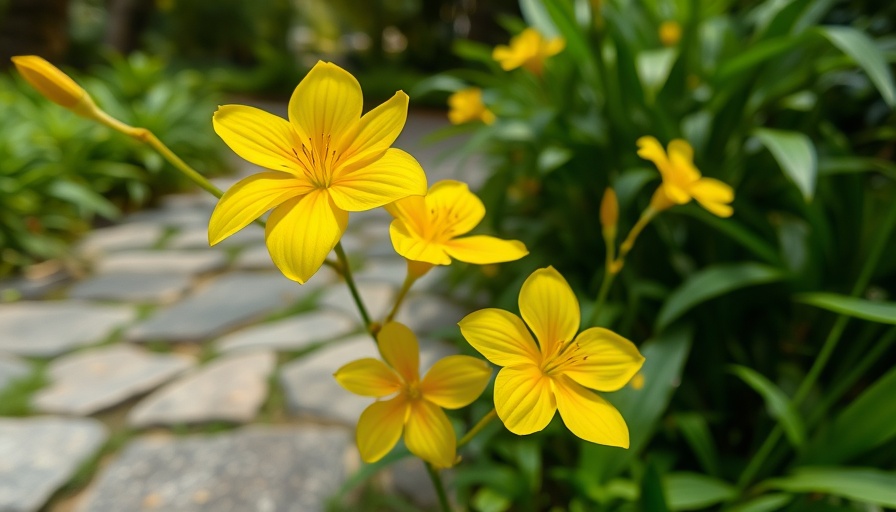
Why Cotula Lineariloba Should Be Your Next Garden Addition
When it comes to selecting plants that enhance garden aesthetics while being easy to care for, few options rival Cotula lineariloba. Often referred to as Brass Buttons or Big Yellow Moon, this intriguing ground cover hails from South Africa and has quickly garnered attention for its button-shaped blooms reminiscent of whimsical elements from children’s literature. For homeowners looking to elevate their outdoor spaces with charming, unique foliage, Cotula offers a vibrant option. With its low-maintenance nature and striking visual appeal, it's a perfect choice for both seasoned gardeners and novices alike.
Gardening Benefits: Low Maintenance with Stunning Appeal
Cotula lineariloba is more than just an attractive option; it’s a workhorse in the garden. Thriving in full sun to partial shade, it boasts the ability to adapt to various soil types but flourishes in well-draining soil. With a modest height of 1 to 2 inches, it can spread up to 36 inches wide, making it ideal for borders or as a ground cover. Its ferny, gray-green leaves provide a textured base for the delightful yellow blooms that grace gardens from spring through fall. As they twinkle in the breeze, they attract beneficial insects like bees and butterflies, contributing to a thriving ecosystem in your yard.
Combining Elements for Visual Cohesion
A standout feature of Cotula lineariloba is its compatibility with other plant varieties, enriching your landscaping options. For instance, consider pairing it with "Billy Buttons" or various types of Leucospermum for a festival of color and form. Cohesion in garden design can complicate choices, but repeating specific shapes and colors throughout your planting can lend your garden a harmonious feel. This attention to detail amplifies visual interest, making your outdoor spaces even more inviting.
Seasonality and Maintenance: What You Need to Know
Routine care is minimal, with regular deadheading to encourage continuous blooming being the only significant chore for gardeners. After the bloom cycle, you can shear the plant back to about three inches to maintain shape and vitality. Fortunately, even if a tough frost takes its toll, Cotula has a comeback story; it often revives in spring, creating an enduring element to your landscape.
Ecological and Practical Advantages of Cotula
This plant is not just an aesthetic choice—it's also practical. Cotula lineariloba is considered fire-resistant, making it a strategic addition in fire-prone areas. The plant’s ability to thrive in coastal, windy, or heat-stressed environments adds an extra layer of resilience that many traditional landscape plants lack. Moreover, its role as a sweet little cut flower means it can add charm to your indoor arrangements, making it a versatile choice.
How to Incorporate Cotula Lineariloba into Your Garden Plan
For those looking to add Cotula to their home garden, consider these practical tips:
- Placement: Perfect for trailing over containers or as a vibrant edging along pathways.
- Mixing: Use it with other round-shaped, textured plants like Pittosporum ‘Golf Ball’ to create delightful visual repetition.
- Watering: While medium watering is best initially, allow the plant to gain drought resistance with age, reducing upkeep.
Conclusion: Taking the Leap with Cotula Lineariloba
Cotula lineariloba isn't just another plant; it’s a game changer for homeowners and gardeners alike. Its unique charm combined with practicality makes it a must-have for anyone looking to spruce up their outdoor spaces. Whether you desire a garden that invites pollinators, adds unique visual texture, or simply requires little maintenance, Cotula fits the bill beautifully. Now is the time to explore the enchanting world of Cotula—happy gardening!
 Add Row
Add Row  Add
Add 






Write A Comment